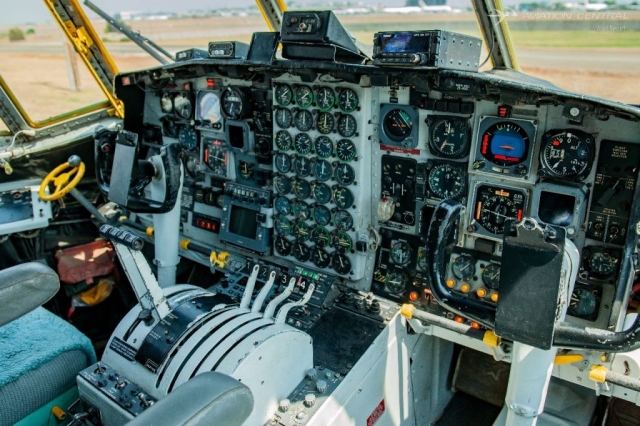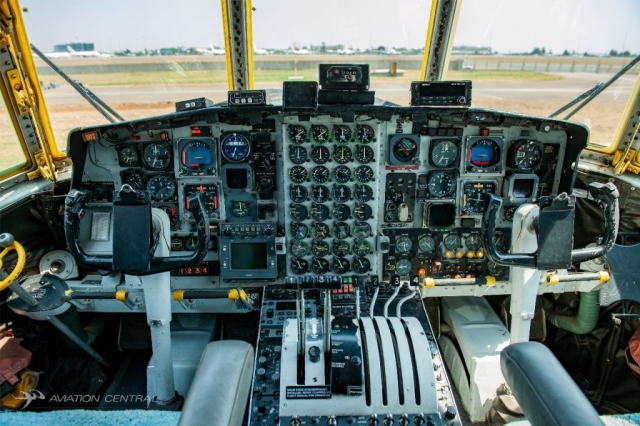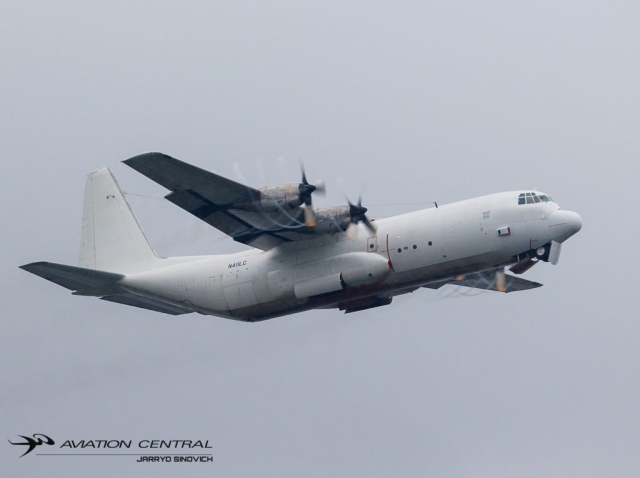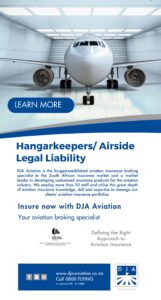Last SAFAIR L100 leaves SA

On a cold and wet Saturday the 11th February saw SAFAIRs last Lockheed L100 Hercules leave South African soil for the very last time. This particular L100 will join the fleet of Lynden Air Cargo. Lynden Air Cargo is an American cargo airline based in Anchorage, Alaska, USA. It operates scheduled services and on demand charter, international and domestic flights, including services for the US military. Its main base is Ted Stevens Anchorage International Airport.

(SAFAIR) Safair Operations as it is known today was established in 1965. At the time it was known as Tropair (Pty) Ltd and was a general aviation charter company. In 1970 the company name changed to Safair Freighters (Pty) Ltd when the company was purchased by Safmarine and the new entity began operations on 18 March 1970. Its primary client in the 1980s was the South African Defence Force.

The company operated the largest fleet of L100 aircraft in the world. Humanitarian Aid and Relief operations has always been Safair’s “niche” market. Safair assisted aid and relief agencies such as the United Nations, World Food Programme, and the International Committee of the Red Cross in delivering much needed humanitarian aid to stricken regions on the African continent as well as other areas in the world where such assistance was required.
The L100-30 left with the new November registration of N411LC and its previous South African registration was ZS-OPS. She was built in 1978 as a Lockheed L-100-30 Hercules (L-382G) C/N 382-4799).

Lockheed L100 Speculations
Aircraft Configuration Possibilities/Operation
Flat floor/wooden floor
Roller system
Fuel Burn : ± 2700 litres per hour
300 kts maximum cruise speed
Seating capacity of up to 90 passengers on airline type seats *
Bulk liquid transport – up to 24 000 litres (fuel)
20 000 kg for more than 1 200 nautical miles
Short field landing and take-off capability
Aerial delivery of food and medicine (Air drops)
Transportation of sea containers, large vehicles/trucks, oversized cargo
External fuel tanks for increased range

Combination of freight and passengers
Wingspan 40.41m (132 ft 7″)
Length 34.37m (112 ft 9″)
Height 11.66m (38 ft 2″)
Maximum certified take-off weight 70 307kg (155 000lbs)
Maximum certified landing weight 61 235kg (135 000lbs)
Maximum certified zero fuel weight 57 727kg (127 000lbs)
Basic empty weight 34 545kg (76 000lbs)
Average APS weight 35 000kg (77 000lbs)
Landing Requirements
The maximum landing weight for the Hercules L100-30 is 135 000 lbs (61 235kg). At this weight the following landing distances are required.
Airfield Elevation Runway Length (zero wind)
Sea Level 4 800 ft
1 000 ft 5 000 ft
2 000 ft 5 200 ft
3 000 ft 5 300 ft
4 000 ft 5 500 ft
5 000 ft 5 700 ft
[02/11, 20:46] Neil Swart: Cargo compartment…
[02/11, 20:46] Neil Swart: Length 17.07m (54 ft)
Width 3.02m (10 ft 3″)
Height 2.74m (9 ft 3″)
Cubic capacity 140 cubic meter (excluding ramp)
Floor height (above ground) 0.99-1.04m (3 ft 3″-3 ft 5″)
Cargo floor Aircraft can be supplied with either a flat metal floor, a wooden floor or an adjustable roller system
In 2013, Safair created a low-cost carrier subsidiary called FlySafair. They currently operational with the first flight having taken place on 16th October 2014. FlySafair operates passenger flights between Cape Town, George, Gqeberha, Johannesburg, Lanseria, Durban and East London. This is the companies primary focus now and moved away from cargo operations!



















Leave a Reply
You must be logged in to post a comment.